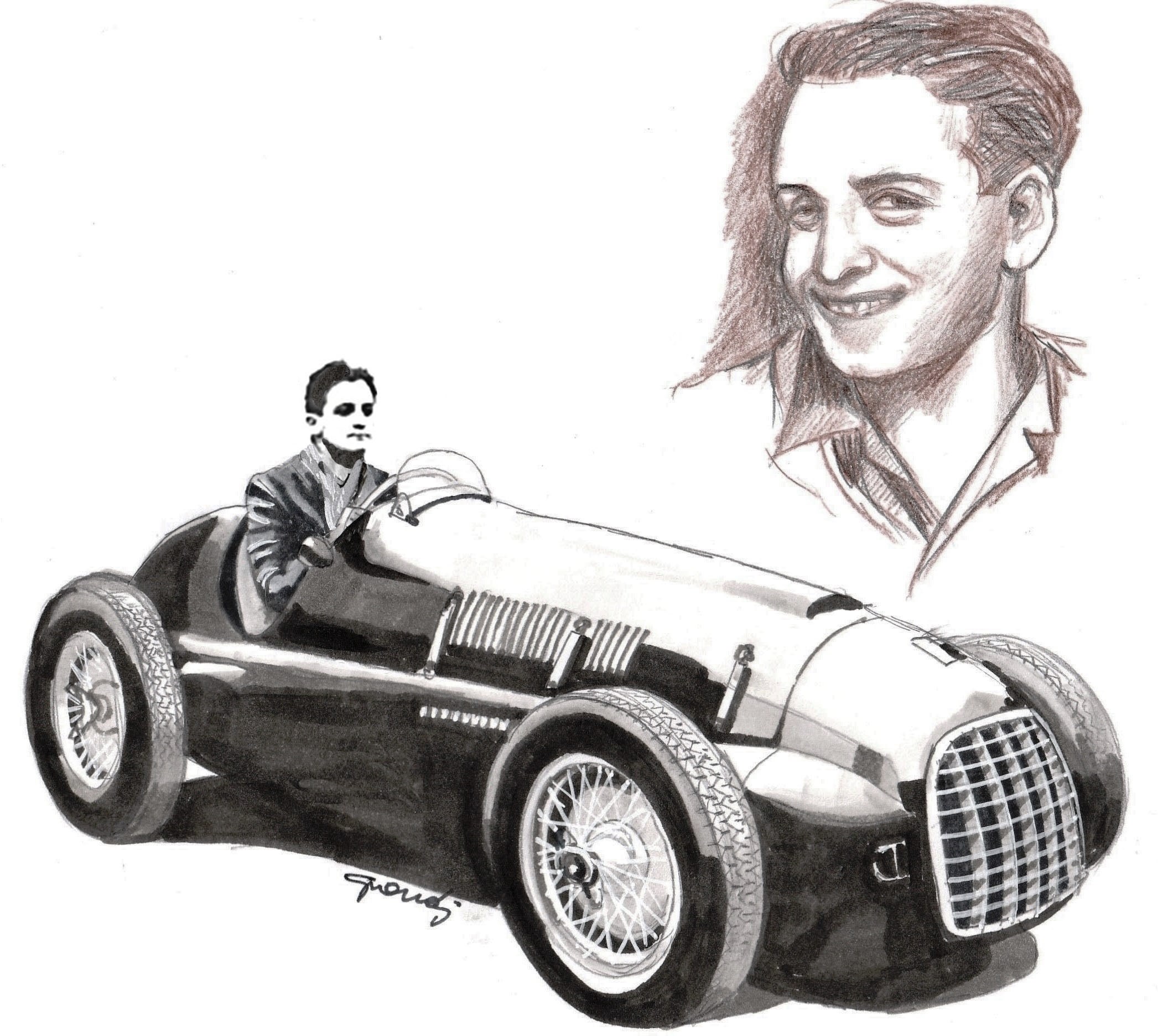World Champion
With the valuable support, depth of knowledge and illustrative talent of Prof. Massimo Grandi
Photo credit: Massimo Grandi
It’s worth remembering something that tends to be forgotten: In order to defeat Alfa Romeo in Formula 1, Enzo Ferrari hadn’t hesitated to make a major investment by betting on a normally-aspirated engine rather than a supercharged one. An investment that would have been justified if the World Championship Formula had lasted more than two years, which is exactly what happened. In 1954, a new regulation limiting engine capacity to 2,500cc had already been planned for, while in 1952 and 1953 they would have raced with their Formula 2 single-seaters, sending the mighty 375 powered by the large V12 engine designed by engineer Lampredi into retirement.

Victory finally came at Silverstone, but there were of course others, Including Monza. There had also been that immense emotional turning point that caused Enzo to declare that he had “killed his Mother”. But the most important achievement had eluded him: the World Championship victory that was within reach. Fangio, cunning and methodical, had managed to take advantage of every opportunity to accumulate points with his Alfa and took advantage of Enzo’s unequivocal error at the final race, in Spain. The circuit, according to Pirelli, would have required the new 18-inch tires but Enzo, incorrectly, chose not to modify the winning car, and lost. Ferrari, however, always had a plan: to bring a suitably modified 375 to Indianapolis. The American race was valid for world championship points. Why not give it a try?

The paradox, a kind of curse of the 375, manifested itself once again through a wheel. In Maranello they had worked relentlessly on the project, which was promoted, not surprisingly, by Luigi Chinetti, a valuable importer to the US market. The 375s modified to meet the Indy regulations, with work carried out on the displacement, had been sold to American drivers. But the one destined for Ascari had been profoundly revised, with an elongated wheelbase and many useful upgrades installed specifically for the American oval racing circuit. But the lack of experience of the team caused them to pay a heavy price: the spoked wheels used on the European circuits were unsuitable for the very fast corners of Indiana and Ascari showed incredible skill in controlling his car when one gave way. Ferrari had predicted that things might not go well, and denied that his participation was official by removing the prancing horse from the shields that had appeared on his cars to distinguish them from those sold to privateers.

He never repeated that experience but in the same season of 1952, he did have the satisfaction of winning all the European races and claiming the Title of Formula 1 World Champion with Ascari. The success was identical the following year: the new formula didn’t catch him off guard and his 500 F2, using Lampredi’s two-litre dual overhead camshaft engine pushing 2 valves per cylinder and twin-plug ignition, left everyone standing. In two years Maserati, with Fangio, managed to defeat him just once, but when it happened, the second World Title had already been in Maranello for some time. His cars triumphed at the Mille Miglia with Bracco and Marzotto but the successes were now everywhere thanks to customer drivers and his sports cars. The Ferrari legend had become a reality in just seven years. Pininfarina began to provide the bodywork for his GT cars and famous celebrities and crowned heads of state flocked to Maranello to meet the man himself and buy his unique and victorious cars.



